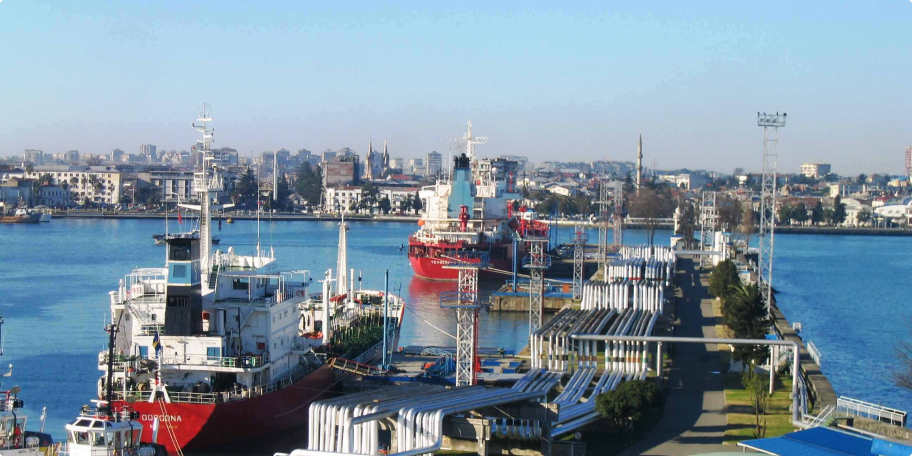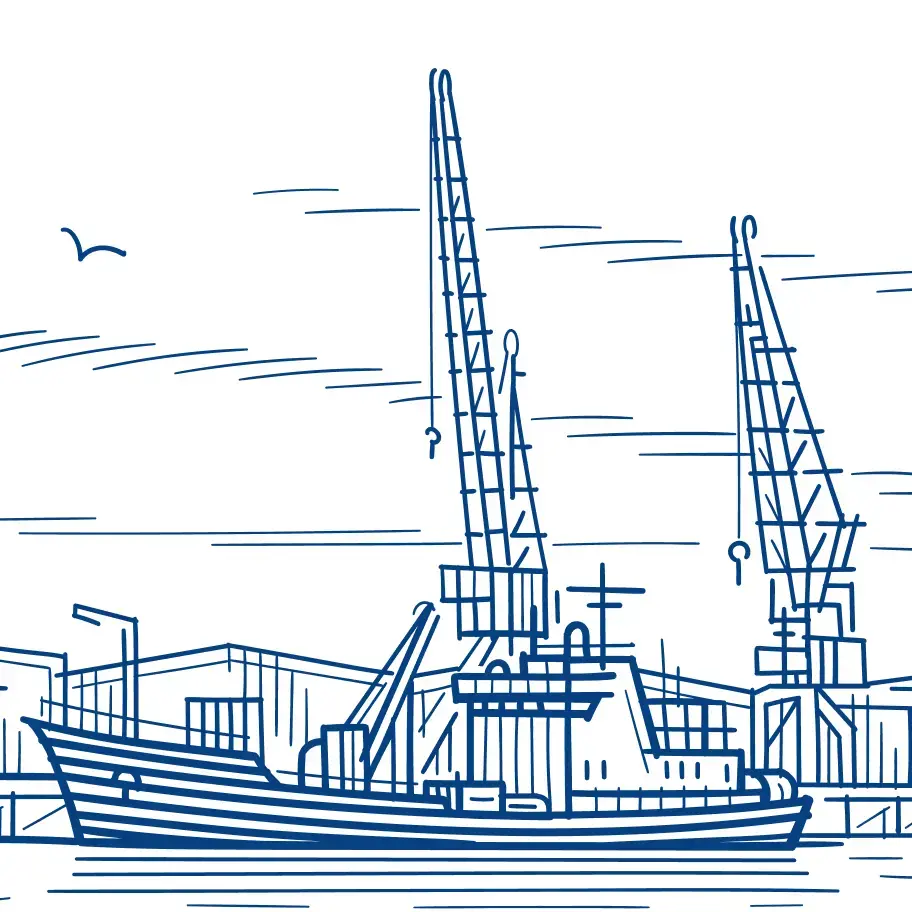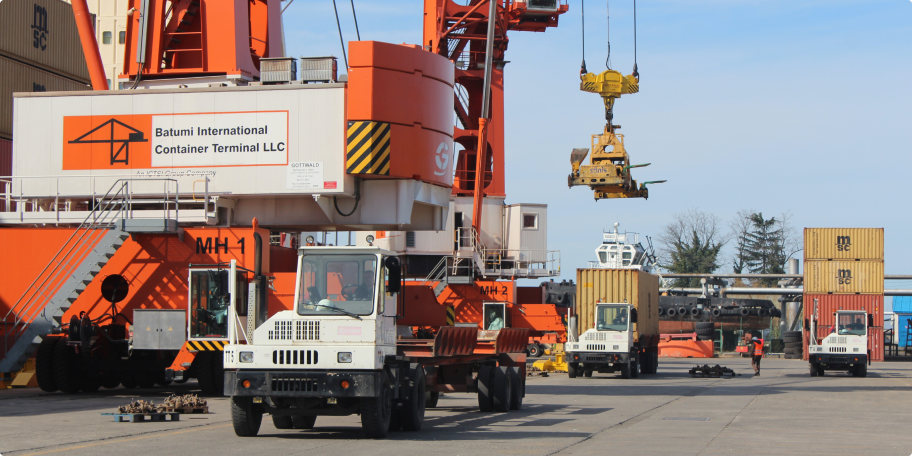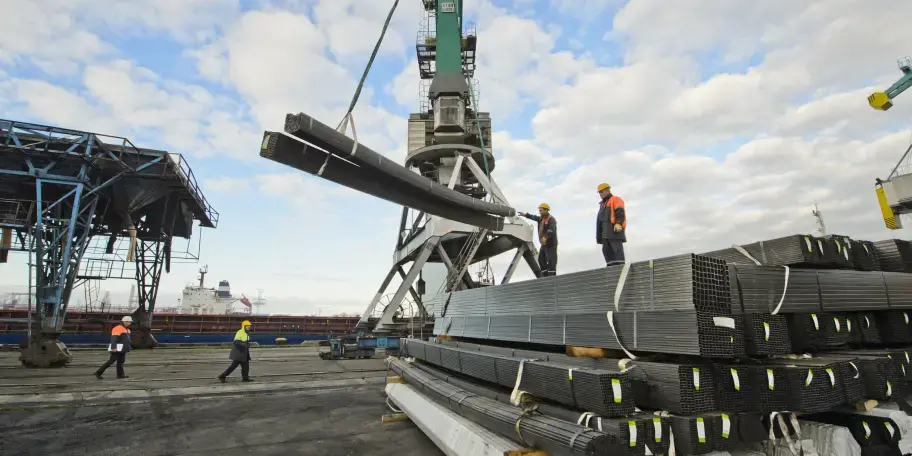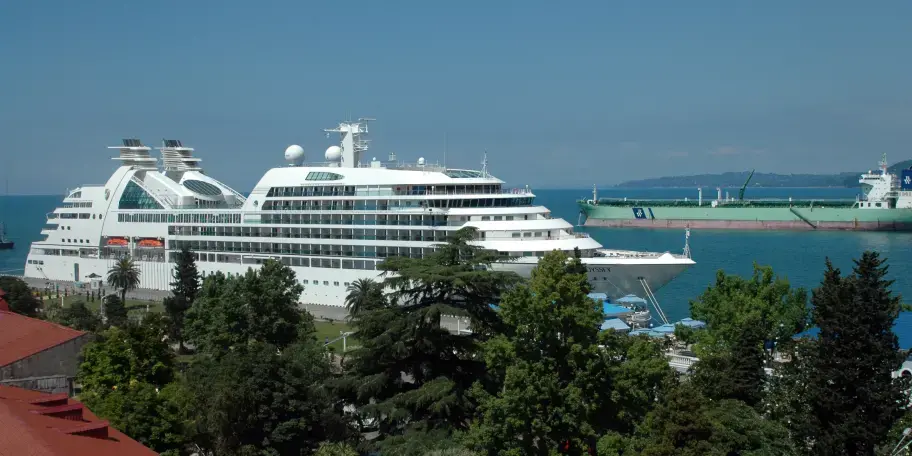In 1873, Robert Nobel, the eldest son of Emmanuel Nobel, arrives in Baku. Inspired by the flourishing oil business, he spends 25 thousand Russian gold rubles on the purchase of Baku Refinery Plant. Nobel chooses Baron Rothschild as a partner in the oil business. Rothschild makes acquaintance with the marine broker F. Lanes and merchant M. Samuel, who were the first to come up with the idea of creating tankers- vessels for oil transportation.
In 1878, Batumi port was declared a port-Franco (for the period up to 1885). By the end of 1884, a project for the further development of the port was created. The authors of the project were the first head of Batumi Commercial Sea Port Admiral Greve and engineer Georg Alkovich. The implementation of the project began in 1885. The main factor in the development of Batumi was the port from the very beginning The basis for this was laid by the construction of the Baku-Tbilisi railway line.
The intensive growth in the volume of exported oil has caused the need to develop an appropriate port infrastructure. The volume of the first export of petroleum products, carried out in 1883, amounted to 3 million pounds. Of the 18 companies involved in oil transportation, the associations of Rothschilds, Mantashevs and Nobels stood out in particular.
On January 5, 1892, the design of a tanker — a new type of sea transport - was approved in the UK. In 1885-1892, an oil loading enterprise was built in the depths of Batumi Bay. In 1886-1889, 2 oil berths with lengths of 80 and 95 meters were built to receive ships loaded with petroleum products. In 1892, the first British tanker "Murex" left the English port of West Hartlepool. He headed for the destination port — Batumi, and from there, loaded with oil, headed for Singapore and Thailand.
The same vessel, having loaded in Batumi port, opened the movement of tankers along the Suez Canal on August 23, 1892. In 1900, the laying of Baku-Batumi oil pipeline was completed. At that time, Batumi seaport handled 26% of the world's oil volume.
By the beginning of the XX century, Batumi port, in terms of its importance and cargo turnover, became one of the leading ports of the Black Sea. Later, 5 more berths were built for tankers and bulk carriers. The cargo turnover of the port increased, the range of processed goods expanded. In 1923, during the Soviet period, the Batumi seaport was transferred to the register of ports of the highest — 1 category, which further accelerated its development.
At that time, it was among those ports of the Soviet Union whose cargo turnover exceeded 1 million tons. In 1959-1962, the building of the Sea Station was built, and by 1967 the port could already receive large-tonnage vessels on the outer roadstead. Participation in oil transportation has turned Batumi port into the most important hub of the Eurasian Transport Corridor and into a major transport facility of international importance.
The advantageous strategic and geopolitical location of Batumi port became a key factor in the decision of KazTransOil JSC, a subsidiary of Kazakhstan national oil and gas company NC KazMunayGas JSC, to acquire the rights to exclusive management of BMP in February 2008.
